Celebrate World Migratory Bird Day (WMBD) with us in our virtual “Birds Connect Our World” edition! Have fun learning about a new migratory bird every day. We have colouring pages, puzzles, activities, and more. Download for free and enjoy nature with your family at home. This week we are also celebrating World Shorebirds Day and Global Shorebird Count (3 to 9 September). 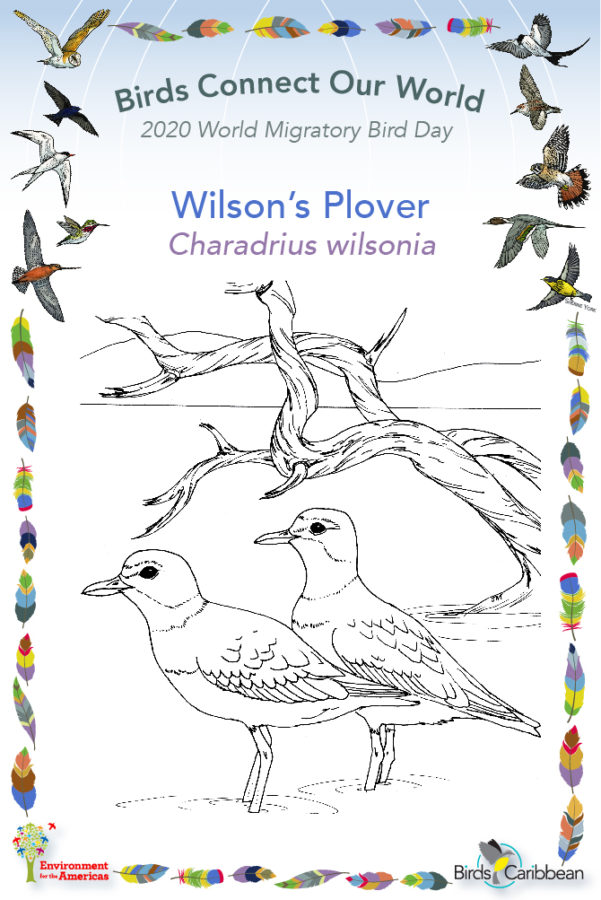
Migratory Bird of the Day: Wilson’s Plover
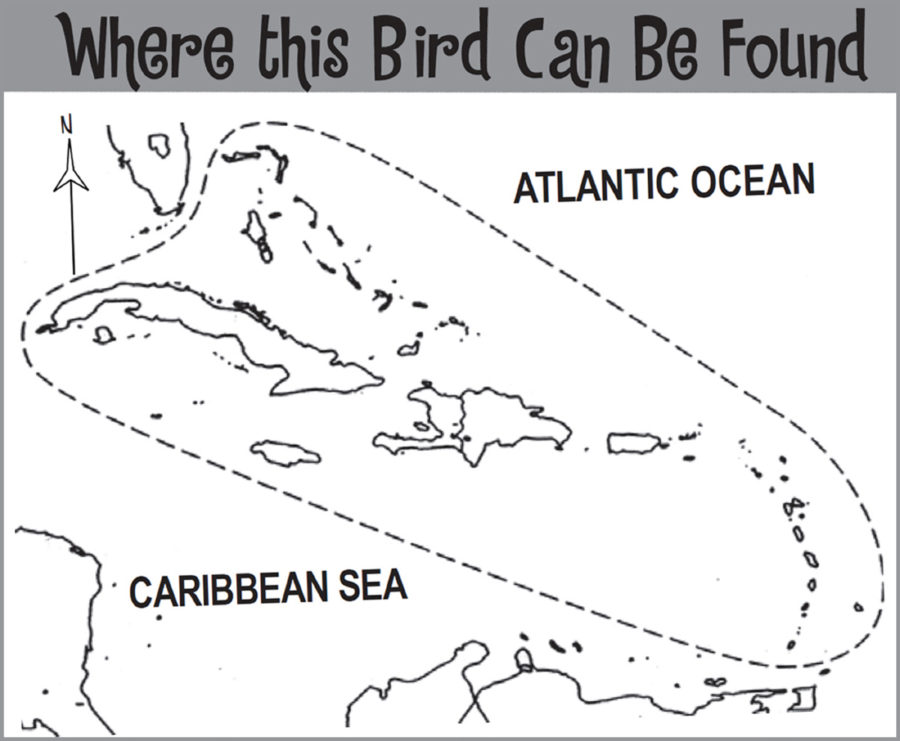 The Wilson’s Plover is a high spirited, medium-sized shorebird, with a distinctive thick black beak. In fact, this species is sometimes called the “Thick-billed Plover.”
The Wilson’s Plover is a high spirited, medium-sized shorebird, with a distinctive thick black beak. In fact, this species is sometimes called the “Thick-billed Plover.”
This plover has pale legs and large eyes. Breeding adults are medium brown coloured on the back, and white on the belly, with a single breast band that is blackish in males and brownish in females. During the winter the male’s black breast band turns brown and they start to look more like females.
Wilson’s Plovers will give loud, sharp, “wheep” and “whip” alarm calls, especially during the breeding season. And they perform convincing “broken-wing” displays in an attempt to lure potential predators away from their nests.
Wilson’s Plovers live on the coast and can be found on beaches and at the edges of lagoons and ponds. They breed across a wide area, from the U.S. south Atlantic coast into South America. Wilson’s Plovers can be found in the northern part of the Caribbean during most months of the year and across the Caribbean during the winter months.
Many Wilson’s Plovers live in places with year-round warm weather. This means they are only medium-distance migrants, with only those birds breeding furthest North in the range moving South in winter. Many of the Wilson’s Plovers in the Caribbean are resident and breed here.
One of the Wilson’s Plover’s favourite foods is the fiddler crab. They watch for them, and then run and lunge, capturing them with their large, strong beaks. With their large eyes and amazing eyesight, they can hunt during both day and night. They teach their chicks to hunt for fiddler crabs at about three weeks old.
The Wilson’s Plover is listed in the U.S. as a Species of High Concern, as it is in apparent decline. Loss of habitat and human disturbance to nesting areas are the primary threats to this species. Learn more about this species, including its range, photos, and calls here.
Colour in the Wilson’s Plover!
Download the page from Migratory Birds of the West Indies Colouring Book. Use the photos below as your guide, or you can look up pictures of the bird online or in a bird field guide if you have one. Share your coloured-in page with us by posting it online and tagging us @BirdsCaribbean @WorldShorebirdsDay #WMBD2020Carib #WorldShoreBirdsDay
Listen to the call of the Wilson’s Plover
The Wilson’s Plover’s call is sharp “Whit” whistle, which it often repeats.
Puzzle of the Day
Click on the images below to do the puzzles. You can make the puzzle as easy or as hard as you like – for example, 6, 8, or 12 pieces for young children, all the way up to 1,024 pieces for those that are up for a challenge!
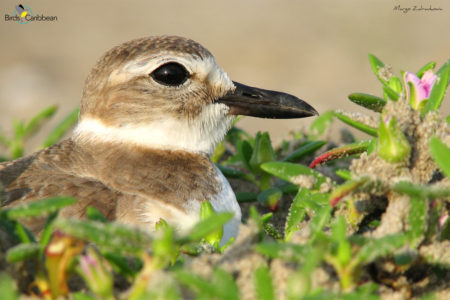
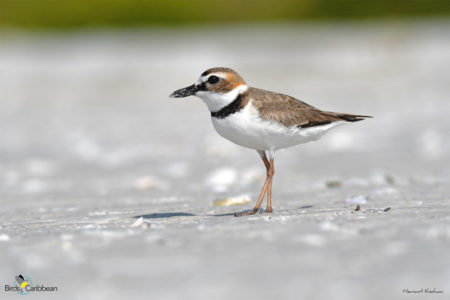
Activity of the Day
FOR KIDS: Fiddler Crabs are one of the Wilson’s Plovers favourite foods. They learn how to hunt for them from their parents when they are just three weeks old! Join up the dots and help the Wilson’s Plover find a tasty crab to eat. ![]()
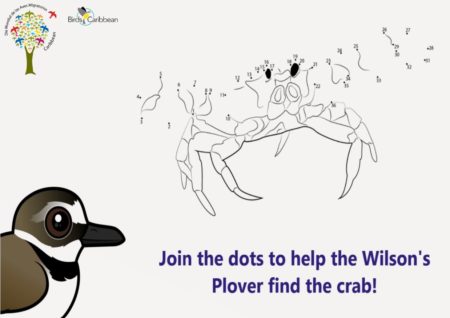 FOR KIDS AND ADULTS:
FOR KIDS AND ADULTS:
- Visit a pond, wetland or nearby beach and see how many different shorebirds and waterbirds you can find and identify. Use a bird field guide or the FREE Merlin bird ID app to help you identify the birds you are seeing.
- If you’re able, do a count of the species that you see – learn more about counting waterbirds and the Caribbean waterbird Census at this link. Learn more about World Shorebirds Day and the Global Shorebird Count (September 3 to 9, 2020) at this link.
- Enjoy the videos below of Wilson’s Plovers at the beach! In the first you can see the difference between the male (with it’s black breast band) and female (the breast band it brown). The second shows a Wilson’s Plover eating a crab- it’s favourite food.
- Visit MigratoryBirdDay.org for many more free activities and resources to learn about migratory birds, their threats and conservation actions you can take.
